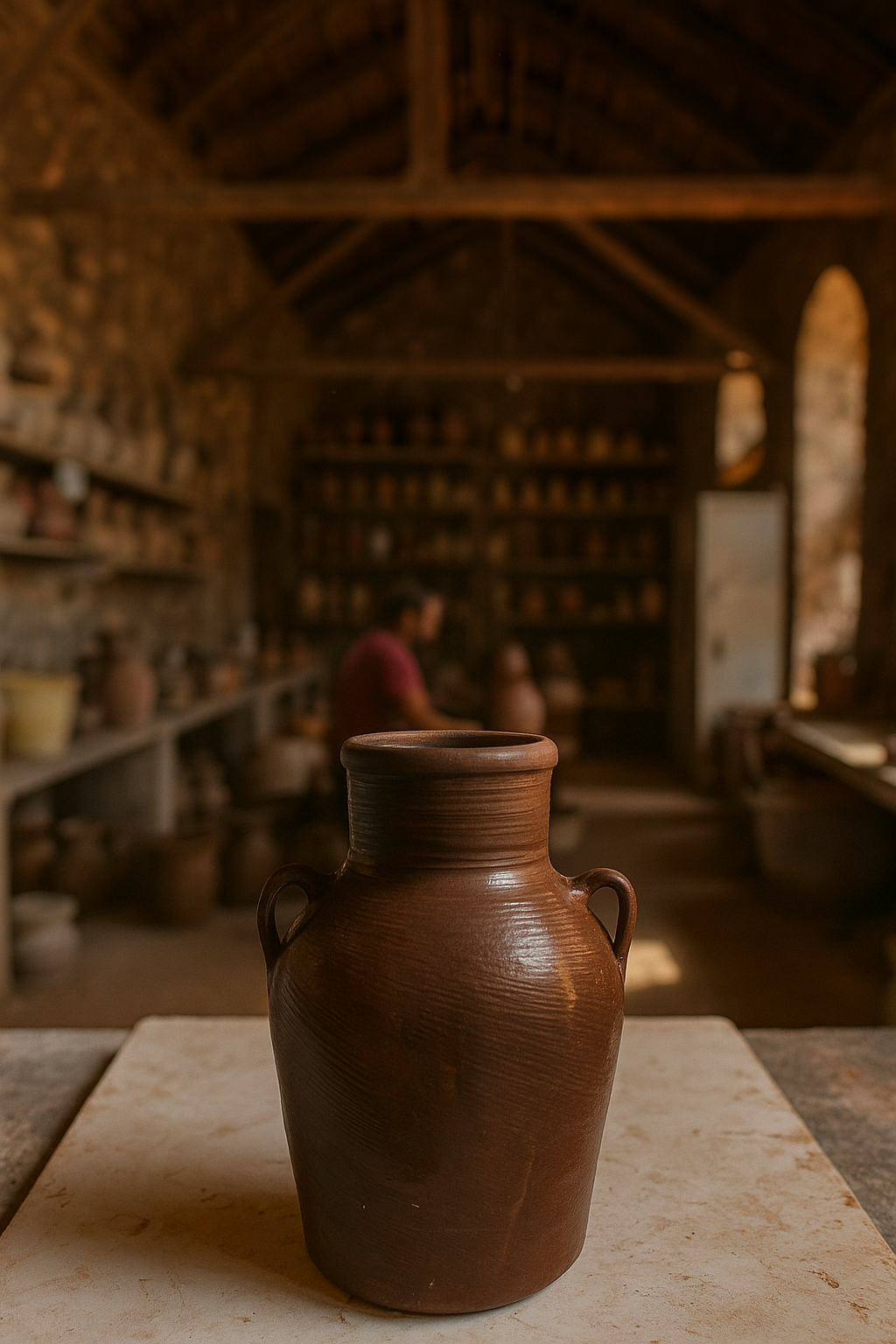
The Dakoujeh is a traditional earthenware storage vessel used in Lebanese households to preserve grains, olives, dairy, and
pickled foods. Its porous clay body kept contents cool and fresh before the advent of refrigeration. Handcrafted
by local potters, the dakouje reflects Lebanon’s enduring pottery heritage and rural way of life.
This vase originates from the family collection of Christopher Ghoussoub, a young potter from Beit
Chabab. The piece was originally crafted by his great-grandfather, a traditional village potter, and has
remained in the family since its creation in 1960. It has not changed ownership and is preserved as part of the
Ghoussoub family’s heritage collection, now safeguarded by Christopher as he works to revive the Beit
Chabab pottery tradition.
The vase is characterized by its traditional Beit Chabab style: thick clay walls, a rounded body with a narrow
neck, and subtle firing marks from the wood-burning kiln. Its handmade construction and slight asymmetries
highlight the artisanal process, distinguishing it from modern, mass-produced pottery.
The piece is exposed at the The Food and Agriculture Organization (FAO) Museum in Rome, Italy.
